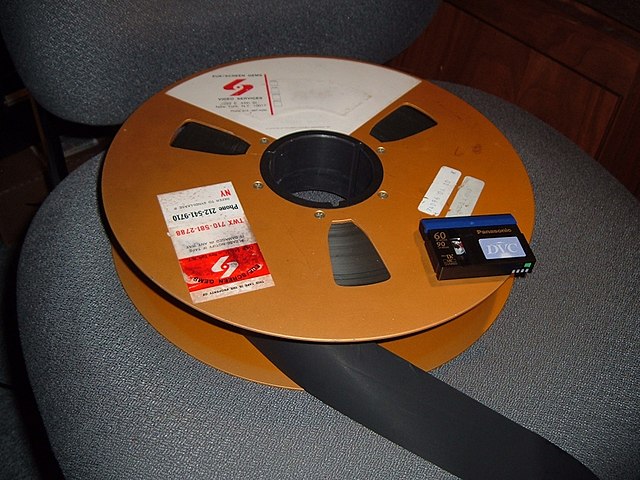Kinescope, shortened to kine, also known as telerecording in Britain, is a recording of a television program on motion picture film, directly through a lens focused on the screen of a video monitor. The process was pioneered during the 1940s for the preservation, re-broadcasting and sale of television programs before the introduction of quadruplex videotape, which from 1956 eventually superseded the use of kinescopes for all of these purposes. Kinescopes were the only practical way to preserve live television broadcasts prior to videotape.
A PA-302 General Precision Laboratories (GPL) kinescope (c.1950–1955). Its movie film camera, bolted to the top of the cabinet, used Kodak optics.
2-inch quadruplex videotape was the first practical and commercially successful analog recording video tape format. It was developed and released for the broadcast television industry in 1956 by Ampex, an American company based in Redwood City, California. The first videotape recorder using this format was built the same year. This format revolutionized broadcast television operations and television production, since the only recording medium available to the TV industry until then was Motion picture film.
A reel of 2-inch quadruplex videotape compared with a miniDV videocassette
Ampex VR-2000
The VR 1000-B model (1961)
Ampex VR2000 Amtec, Colortec and Procamp at DC Video, [1],





![Ampex VR2000 Amtec, Colortec and Procamp at DC Video, [1],](https://upload.wikimedia.org/wikipedia/commons/thumb/5/53/Ampex-Am-Tech-Color-Tech-Proc-Amp.jpg/597px-Ampex-Am-Tech-Color-Tech-Proc-Amp.jpg)